Beechworth
William Anderson; inst 1882 St George's Catholic Church, Carlton; inst 1887 present loc.
1 manual, 8 speaking stops, 1 coupler, mechanical action

From 2003 OHTA Conference handbook:
The nave of Christ Church, designed by James Dobbyn, was opened in 1859 and the massive tower and apse followed in 1864, the latter designed by noted Melbourne architect Leonard Terry and all constructed from local granite in the Early-English Gothic style. The interior includes stained glass windows in the sanctuary by William Montgomery, of Melbourne. The building is classified by the National Trust of Australia (Victoria). In 1955, Louis Williams supervised restoration after storm damage and in 1958 a wooden vestry was added.
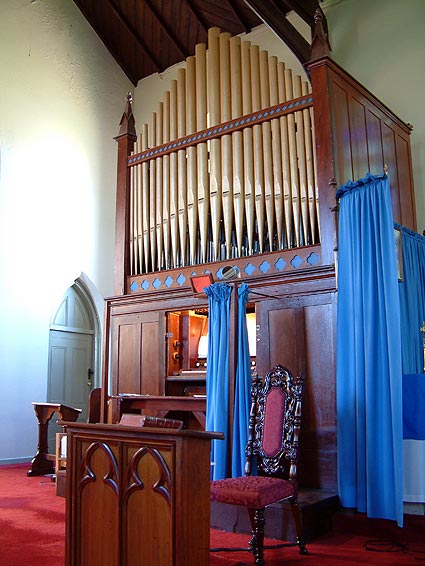
The organ was built by William Anderson, of Melbourne. It was installed at St George's Catholic Church, Carlton in 1882 and placed in its present location in 1887, where it survives with little alteration, apart from the overpainting of the façade pipes, which are wooden dummies. It is a rare example of Anderson's work that has not sustained major alteration. The church is seeking to have the instrument carefully restored.
| MANUAL Open Diapason Stopped Diapason Bass Stopped Diapason Treble Dulciana Principal Flute Twelfth Fifteenth Great to Pedals PEDAL Bourdon |
8 8 8 8 4 4 2-2/3 2 16 |
wood bass CC-Ten.F# Ten.G Ten.G |
Compass: 58/30
Attached drawknob console
3 composition pedals
Mechanical action throughout
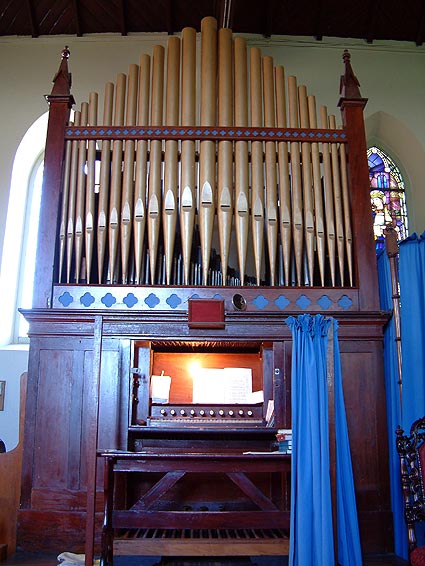 |
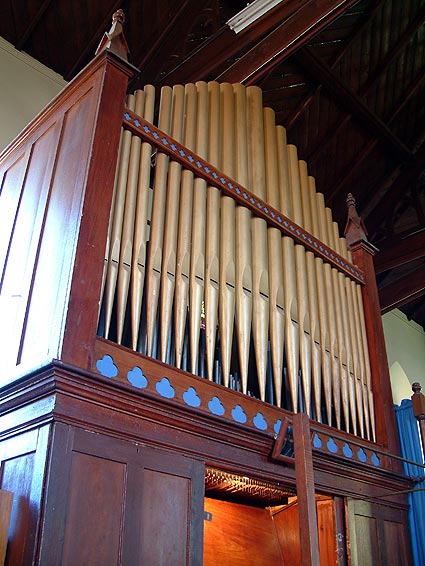 |
|
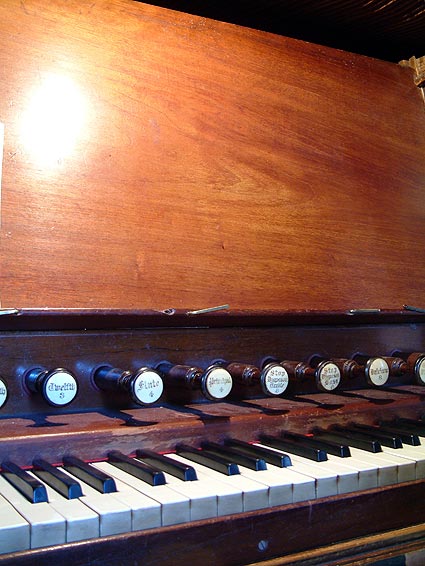 |
 |
|
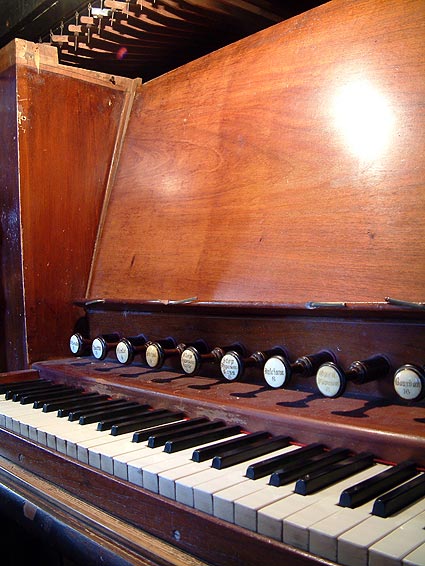 |
||
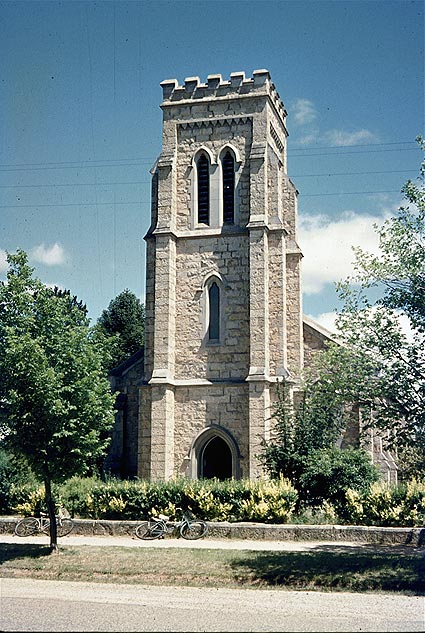
Photo above: Trevor Bunning (1969)
Colin Holden, Church in a Landscape: A History of the Diocese of Wangaratta. Armadale, Vic.: Circa Books, 2002, pp.15, 19, 272.
Gladys Marie Moore, Louis Reginald Williams (thesis submitted … for degree of Master of Planning and Design, Faculty of Architecture, Building & Planning, University of Melbourne, August 2001)
Victorian Churches, edited by Miles Lewis. Melbourne: National Trust of Australia (Victoria), 1991, p.101
Restoration of the organ at Christ Church Anglican Church, Beechworth
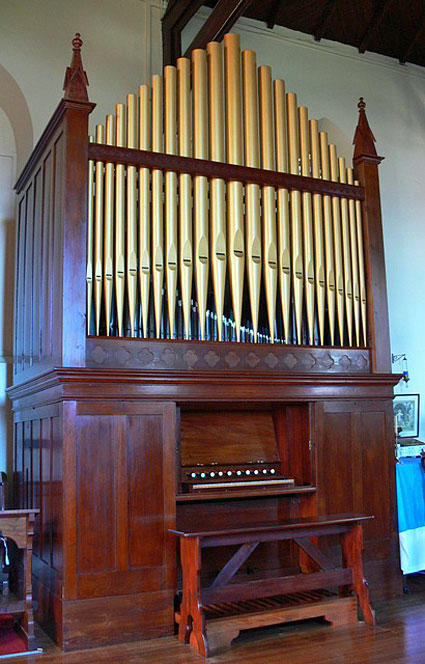
I HISTORY
ST GEORGE’S CARLTON
II RESTORATION
The work has comprised:
- Restoration of the slider windchest, widening of some of the treble note channels and increasing the capacity of the pallet box by inserting a fillet of timber behind the faceboard.
- Restoration of the mechanical action components.
- Releathering of the double-rise reservoir.
- Manufacture of an additional wooden wind trunk for the manual pallet box.
- Manufacture of new pipe metal conveyances for the wooden Open Diapason bass.
- Reconstruction of the console roof (this had been mutilated and then removed when electric light fittings were installed).
- Rubbing pack of the case timbers and hand polishing. New upper rear panels were fitted to the case, providing a reflective surface and protection from light and general interference. Original blowers’ carved inscriptions have been retained.
- Repainting of the wooden dummy façade pipes in high quality gold paint in place of the brass paint with which these had been overpainted. There is no evidence of any earlier stencilling.
- Repair of the wooden pipes. Many had become badly split and all joints have been reglued and some pipes reinforced with a paper covering.
- Repair of the metal pipes. New tuning slides, in place of the rusty originals, have been installed; these have knurled lower edges to facilitate tuning.
- Careful tonal finishing to recapture the original tone quality and revision of the wind pressure to 25/8 inches. This had been raised previously to 3 inches to allow for leakage. The pipework has been retuned to Young’s temperament.
The end result is a truly delightful instrument that performs admirably and has a strong early 19th century character, assisted by the unequal temperament. The upperwork is gentle and the Twelfth adds a strong amount of tonal colour. With a greatly reduced amount of carpet in the building it now has considerable charm. Overall, the work has been carried out with great competence and a high level of intelligence.
John Maidment OAM
September 2008
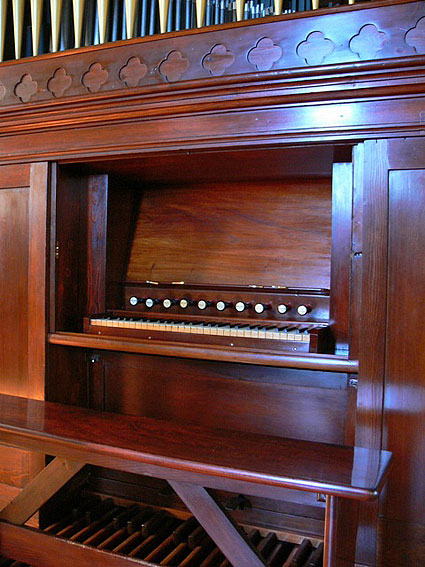 |
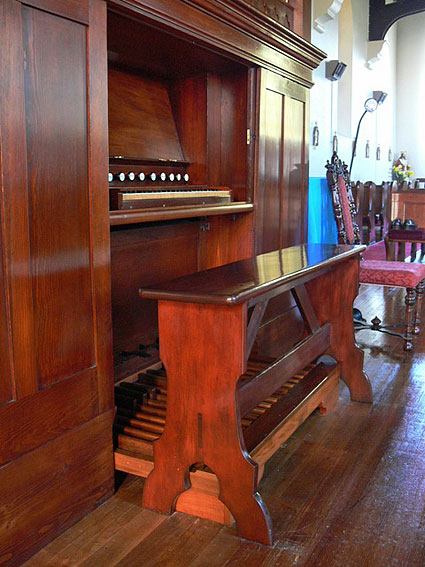 |
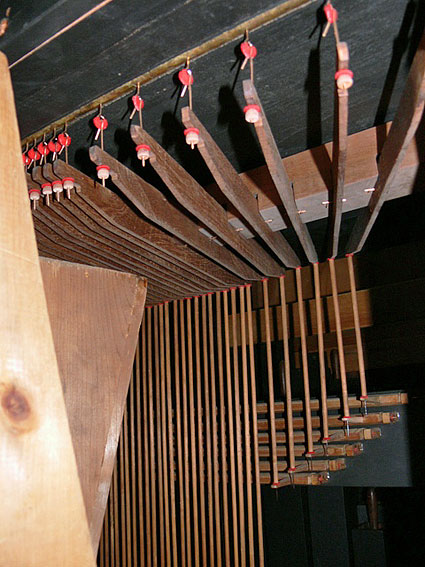 |
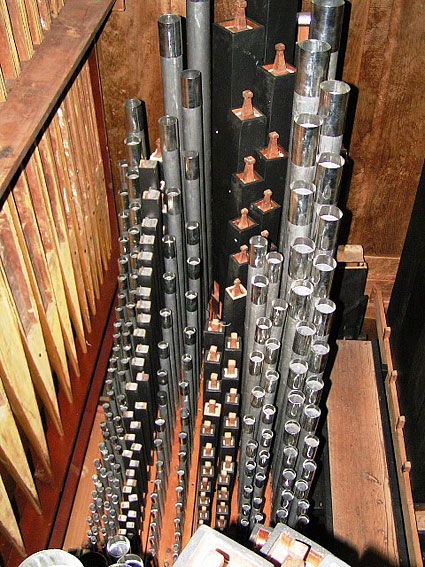 |
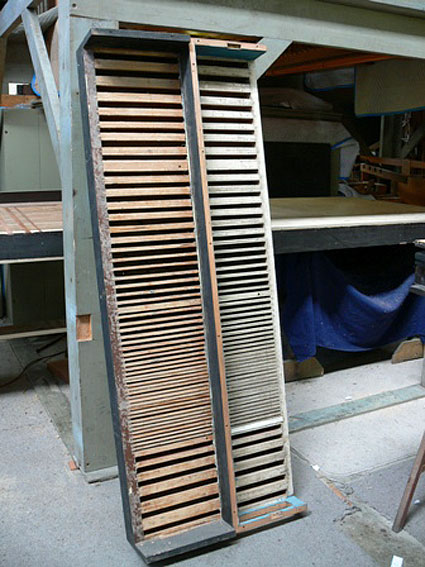 |
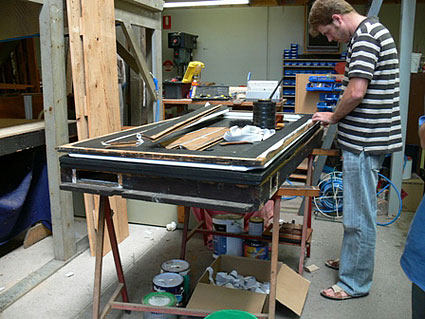 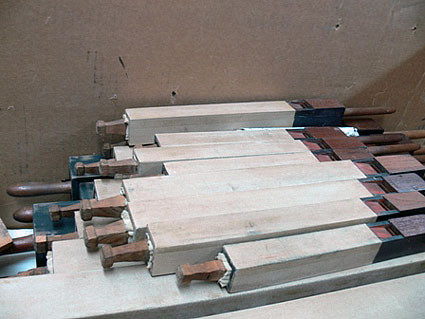 |
Photos: JRM (Sept 2008)